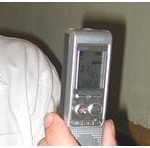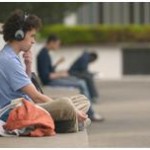This is part of a regular series of articles exploring some of the terms used in e-learning. We’ll do our best to break down the jargon and explain what things are from a basic perspective.
Lectures can be recorded and shared using a variety of technologies: A simple audio recording can be made with a MP3 recorder, whereas more complex systems record video of the lecturer and their presentation screen. Small audio files may be shared via Blackboard sites with students, whereas larger video files are best hosted on an institutional streaming server such as SHUPlayer, or externally via YouTube etc. Editing tools such as Camtasia, Captivate, Jing, Screencastomatic, and Audacity may be used to edit recorded audio or video.
There is some debate about the benefits and disadvantages of lecture capture.
On the plus side, students can attend more closely to lectures, and then use recorded lectures to improve lecture notes and revision, and may particularly help students with dyslexia or partial hearing. Those who miss lectures can find out what was covered.
However, there are also disadvantages. Making notes during lectures helps with information retention and follow-on study, and some students may not feel a need to take notes on materials when a recording of the lecture is available. Also, good lectures include interactions with students which can be difficult to capture. Listening back to long lectures takes time and isn’t easy. Concentrating and navigating within a long audio recording is difficult. Finally, video quality of visual aids is often poor, and the physical presence of the lecturer is important in holding student attention.
Recording lectures also requires preparation. Third party materials need copyright clearance, and students who have been recorded should sign a consent form before recordings are shared. It recommended that presentations are chunked into sensible segments. It is also worth considering how any physical visual aids or student interaction can be captured, and if only audio is being captured, then referring to slide numbers can help with navigation later.
A number of other approaches may be more effective for student learning. For example, brief recordings covering key concepts, recordings of particular sections such as assignment briefings, recordings only of student discussions within the lecture. If students record lectures for themselves they may engage more with the recordings, but should seek permission before capturing and sharing recordings, and may need to place recorders close to the speaker. Timing of release of recorded lectures can important – they can be pre-recorded, with the expectation that students will listen beforehand and the face to face sessions can be more interactive, or they can be released as a reward for passing tests.
For more information, search for ‘Lecture Recording’ in the SHU Staff Intranet and in the Blackboard Self-Help knowledge base in shuspace. See also the Educause Learning Initiative’s 7 Things You Should Know About Lecture Capture.
This blog post is also available as a printable briefing doc on lecture capture.




